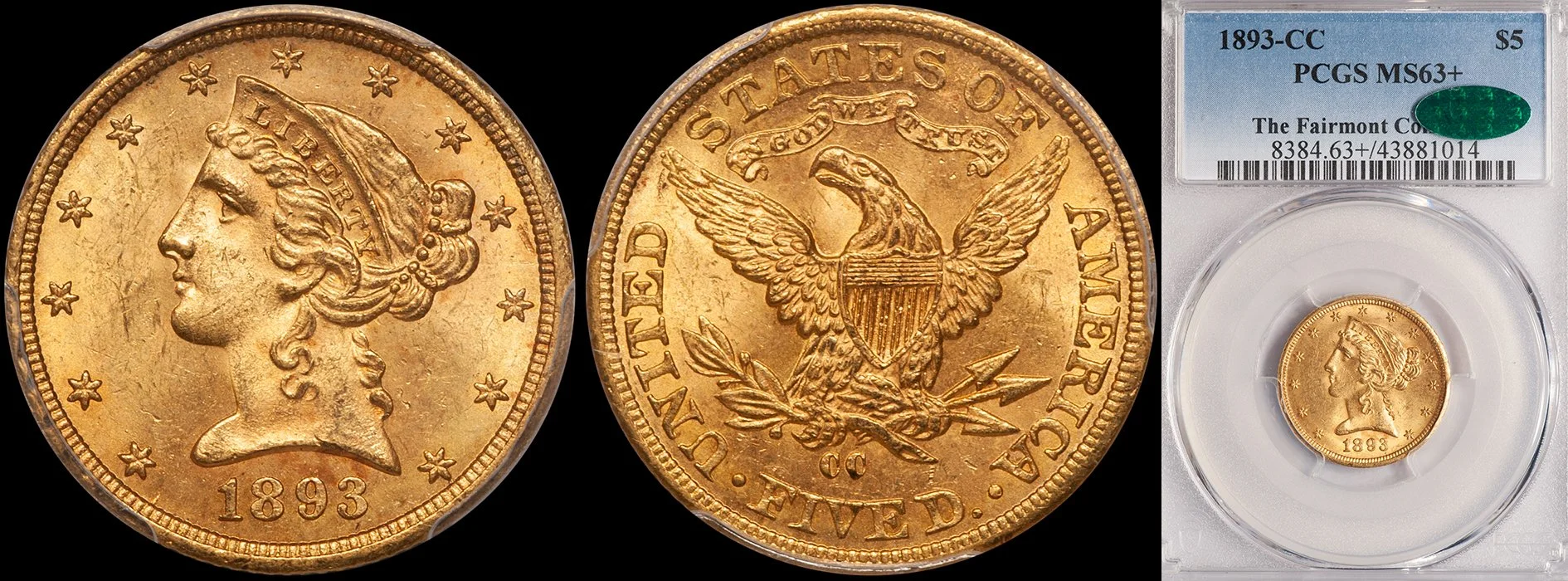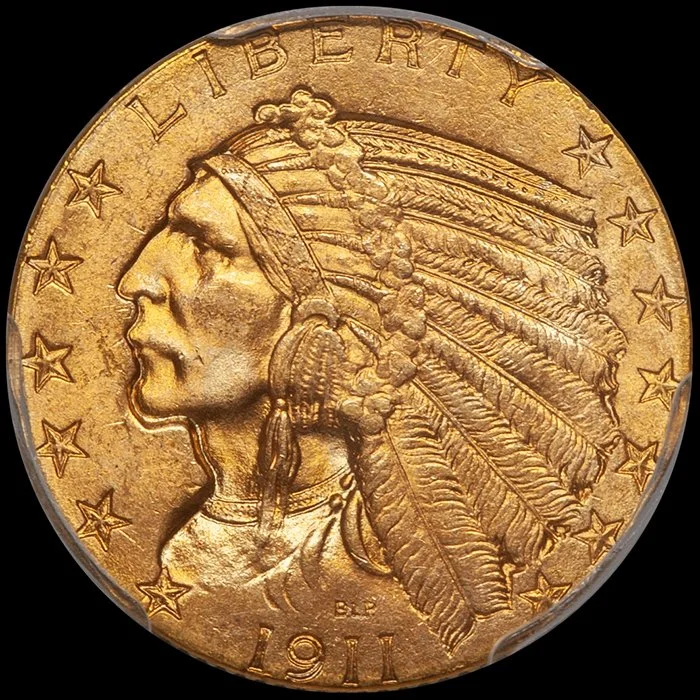Are Population Reports Useful For The Collector?
/Both PCGS and NGC publish listings of the coins that they have graded. The PCGS report comes out on a monthly basis while NGC's report is issued quarterly. At one point in time, I found these to be extremely useful, both as a buyer and seller of rare coins. Today, I dislike them and, more often than not, have to make excuses regarding their numbers when I sell coins. What went wrong with these reports and why are they no longer a good tool for the coin collector?
There are many flaws inherent with the PCGS and NGC population listings. The first is their reliance on dealers to maintain the integrity of the data.
When a coin is submitted to PCGS or NGC, it is registered in a database. In a perfect numismatic world, each unique coin would be counted just once. But, as even the most casual collector realizes, grading is subjective and a tiny increase in grade can mean a huge increase in value. If I purchase a coin in a Mint State-63 holder and I think it is very high end, the chances are good that I will remove it from the old holder in an attempt to get a Mint State-64 grade, especially if the financial rewards are great.
Each PCGS and NGC holder contains a "tag" or an insert that lists the date, grade and unique serial number of a coin. Once a coin has been removed from its holder it is the responsibility of the dealer (or collector) to send the tag back to PCGS or NGC. When the tags are returned they are deleted from the original database.
But this creates a number of problems. What if the dealer loses the tag? What if he does not care about the population figures and throws the tag(s) away? Suddenly the population figures lose much of their value.
Let me give you an example. I recently bought an 1891 double eagle. This is a very rare coin in all grades with an original mintage of just 1,390 business strikes and an estimated surviving population of four dozen pieces. After a few submissions, it attained an AU-58 grade from NGC. I was very excited about this coin and prepared to add it to my website. And then came a total shock...
When I looked in the October 2001 NGC population report, I was astonished to find that the population for AU-58 1891 double eagles was twenty-two (with another two higher). PCGS had, as of February 2002, graded seven with none better. This means that the two services had graded twenty-nine examples in AU-58. Suddenly, my very rare 1891 double eagle seemed a lot less rare. Or was it?
As someone who is knowledgeable when it comes to gold coins, I know that there are not twenty-nine AU-58 1891 double eagles in existence. In fact, there are probably no more than a dozen accurately graded 1891 double eagles in all AU grades combined. So what happened to distort the data?
An NGC or PCGS AU-55 1891 double eagle is worth approximately $10,000-12,000. An AU-58 is worth $14,000-17,000. If a coin is a "tweener" (i.e., it is right between a 55 and a 58 in terms of quality) there is considerable motivation for it to be resubmitted. In MS-60 the same coin is worth $30,000-35,000. When one considers how infinitesimal an amount of difference in quality there is between most AU-58 and MS-60 coins (or even AU-55 and MS-60, to be honest), is it any wonder why an especially nice 1891 double eagle might be resubmitted ten, fifteen or even twenty times?
The dealer who owns a coin such as an AU-58 1891 double eagle can be profiled (fairly or unfairly) as a reasonably wealthy individual with reasonably sophisticated taste. In other words, he is likely to know the difference between a "58" and a "60" and have deep enough pockets to tie the coin up for three months while it is submitted and resubmitted. Rare coins with big price spreads are, therefore, more likely to have inaccurate populations then common coins or scarcer coins with minimal price spreads between one grade and the next.
Unfortunately, many of the leading coin submitters are not what I would describe as "avid numismatists." For them, coins are a business and submissions are a major part of their day-to-day operations. This means that any of the major wholesale submitters are exactly the type least likely to care if populations are accurate. I have confronted a number of these individuals about distorting coin populations and their reactions are always similar: they could care less.
The population reports have other inherent flaws. PCGS, as an example, has graded over 7 million coins as of February 2002. Managing a database of this size is a huge task. And the person managing this database is most likely to be a data entry clerk making a few dollars over minimum wage, not a numismatist. How are they going to know that a certain population figure is obviously inflated? Many savvy professional numismatists would have trouble making these judgement calls.
Are the population figures of 2002 totally worthless? Not really. I have long maintained that the true value of these numbers is comparative as opposed to quantitative. Let's say, for example, that you look at the population figures for Type One double eagles. It makes no sense to compare an 1853 Philadelphia double eagle to an 1853-O in terms of the total number graded. One--or both--of these issues could have a population that is distorted by at least 30-40% due to resubmissions. But it makes some sense to compare the number of 1853 double eagles graded in AU-55 to the number of 1853-O double eagles graded in AU-55.
When examining population figures, here are a few things to remember:
High-end coins are more likely to have inflated populations than low-grade coins. As an example, a coin that grades AU-50 is less likely to be resubmitted than an AU-58. This is due to the fact that the AU-50 probably isn't a very nice coin and the value spread between this and the next grade up is much less than between an AU-58 and an MS-61.
Many low-end examples of scarcer to rare coins do not get submitted. As an example, if I owned a Fine-15 1851-O half eagle, I would just as soon sell it unencapsulated as slab it. If I did this, it would never be counted in a population report. But this coin clearly exists, as do no-grades, damaged coins and other "misfits." The total number of coins graded for an issue may represent only a percentage of those actually available in the market.
Be aware of population figures at both services. As an example, I currently own a PCGS AU-58 1852-D half eagle. The February 2002 population at PCGS is four in AU-58 with three better. The current NGC population of this issue is twenty in AU-58 with eleven better. This means one of two things. Either NGC grades this issue much more loosely than PCGS or the NGC population is severely inflated due to resubmissions. Given the fact that this coin is worth $5,000-6,000 in AU-58 and $8,000-12,000 in MS-60 to MS-61, I would suggest that the latter is more likely the case.
Only a small fraction of modern coins have been resubmitted. Never purchase a modern coin based solely on population figures as there are tens of millions (or more) of most issues waiting to be graded.
With well over 10 million coins submitted between the two services, mistakes do exist on the population report. As an example, NGC shows two 1883-CC half eagles graded MS-64. I have never seen or heard of an 1883-CC half eagle in any grade higher than MS-62 (let alone two of them) and am inclined to believe that these represent data entry errors. Similarly, I know coins that exist that for whatever reason have never made it onto the PCGS or NGC reports.
What can you as a collector do to improve the accuracy of the population reports? I would suggest the following:
Compile lists of inaccurate numbers and send them to PCGS and NGC. But, you need facts to change a population. Merely telling one of the services "I think the number of 1847-O quarter eagles graded in Mint State-62 seems a little high" will not work. You need to be able to prove your assertion.
Urge your dealer (or dealers) to be careful in managing PCGS and NGC inserts. Encourage him to turn in his tags if he does not already do so. If he is resubmitting a coin of yours for an upgrade, make certain the tags are redeemed.
Tell PCGS and NGC that the population figures are important to you and you would like them to become accurate. Both services are sensitive to the needs of collectors.
Realize that PCGS and NGC figures are inaccurate and make your purchasing decisions accordingly. Never pass on a good coin because of the population figures in one--or both-of the reports.










